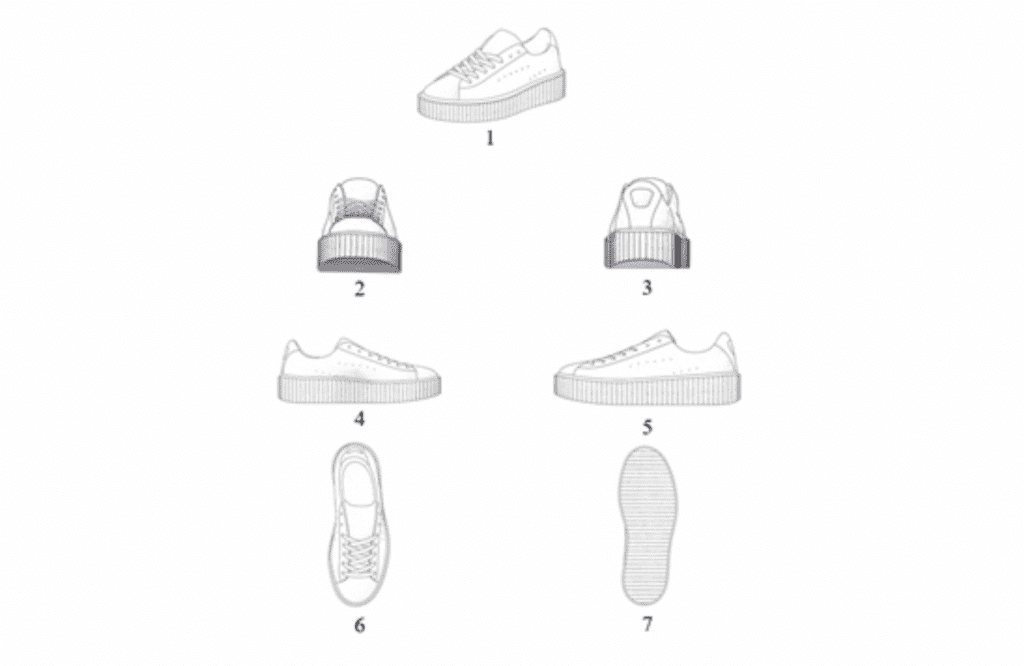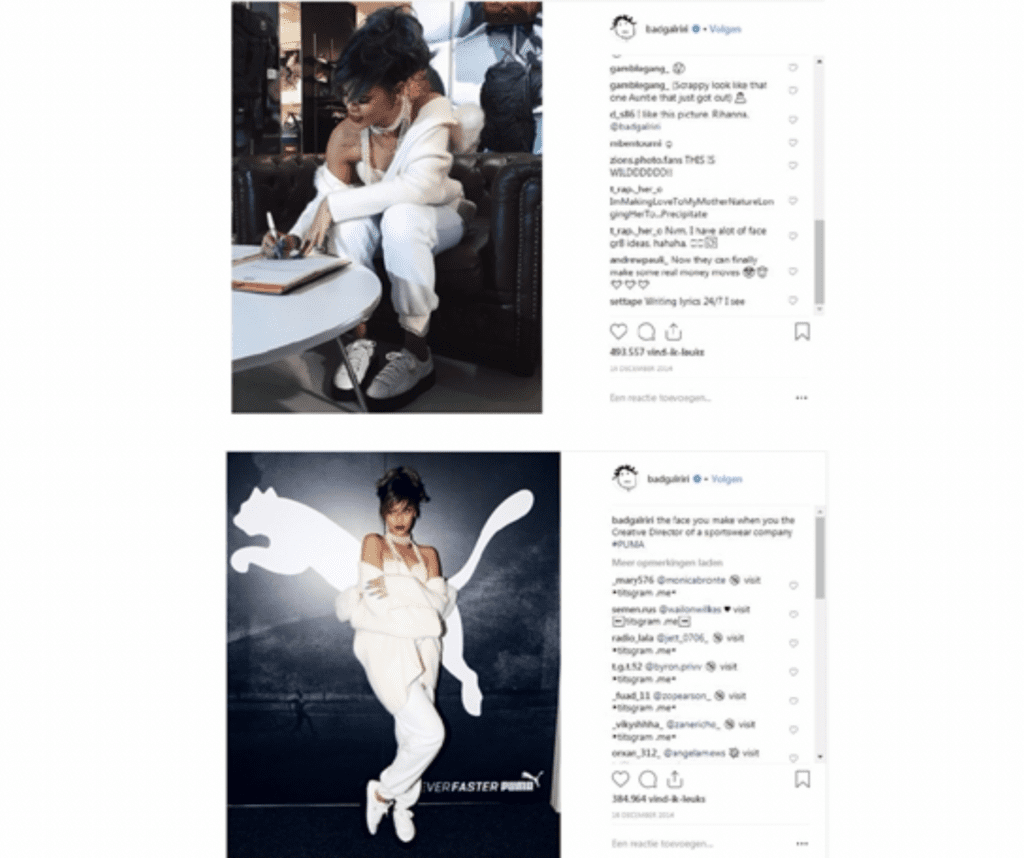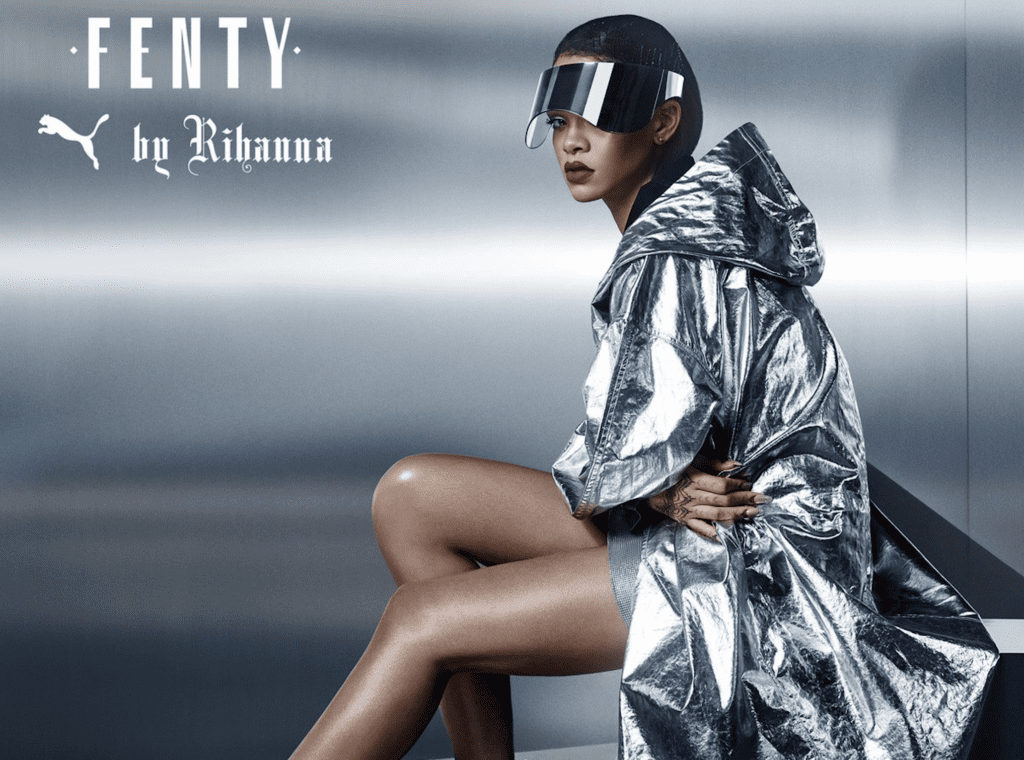Puma has been handed a loss in a Community design case in the European Union on the basis that the underlying sneaker design was made public over a year before the German sportswear sought to register it. In a decision on March 6, the European Union General Court dismissed an appeal from Puma, which sought to overturn the Board of Appeal of the European Union Intellectual Property Office (“EUIPO”)’s cancellation of a Community design registration for its thick-soled Creeper sneaker. The grounds for the EUIPO’s declaration of invalidity: Puma creative partner Rihanna had posted images of the sneaker to her heavily-followed Instagram account over a year before Puma filed an application to register the same design.
Some Background: Dutch footwear company Handelsmaatschappij J. Van Hilst (“HJVH”) waged an invalidity proceeding with the EUIPO in July 2019, arguing that the Puma Creeper lacks the necessary “individual character” to be registered as a Community design because the sneaker design (the “prior design”) was disclosed by Puma more than 12 months before the German sportswear brand filed its application for the overall appearance of the sneaker.

> Article 6 of Regulation No 6/2002 bars the registration of designs that lack “novelty” or “individual character” over designs that were made available to the public – including those that were made public by the applicant, itself – more than a year before the relevant application was filed. To satisfy the “individual character requirement,” the design must give a different “overall impression” from existing designs. As such, prior disclosure – including disclosure by the applicant, itself – can lead to an invalidation of both requirements.
Specifically, HJVH alleged that the sneaker design had been revealed to the public before Puma filed its application thanks to images that Rihanna posted on her Instagram account in December 2014, which showed her wearing “a pair of white trainers with a thick black sole,” (i.e., the since-registered sneaker design) and that were subsequently reproduced “in several articles in online newspapers.”

The EUIPO sided with HJVH in March 2021, finding that the sneaker design had, in fact, been made public, thereby, removing the individual character required for registration. Puma appealed the EUIPO’s decision in April 2021, only to have the Board of Appeal of EUIPO dismiss the appeal after finding that Puma failed to produce any evidence to establish that the Instagram posts that featured the sneaker (see two of them above) and the subsequently published news articles that included the same images “would be insufficient to enable the specialist circles within the European Union to become aware of the prior design.”
Sneakers Before the General Court
In its decision on March 6, the General Court upheld the EUIPO’s assessment that the images at issue are “sufficient to demonstrate the disclosure of the prior design and that that disclosure could have become known to the circles specialized in the sector concerned.” In other words, the images published to Rihanna’s Instagram in December 2014 “made it possible to identify … all essential features of the prior design.” In siding with the EUIPO, the court rejected Puma’s defenses that: (1) the photos at issue “do not enable … the prior design to be recognized in such a way as to enable that overall impression to be compared with the overall impression produced by [the registered sneaker] design” (2) the images in question do not focus on the shoes, but on Rihanna; (3) the images do not contain enough detail to make the features of the prior design perceptible; and (4) not all views of the prior design are visible in the photos at issue.
The court dismissed each of those arguments as unfounded, determined that Puma failed to put forward any arguments capable of chipping away that the significance of the design’s disclosure, and ordered Puma to pay the costs associated with the proceedings.
The Takeaway for Brands: The case provides some notable takeaways for brands looking to tease/promote impending “it” products, including with the help of famous endorsers, while also considering the benefits of design registrations in the EU.
Reflecting on the significance of the case, Fox Williams’ Stephen Sidkin states that design owners “must strike a careful balance between reaping the benefits of celebrity endorsement or collaboration versus the protection of their intellectual property rights, which may entail exercising greater control over social media posts, even if this is unpalatable to the celebrity in question.” If a design is disclosed to the public or shared widely over social media before it is registered, the clock will start ticking on the 12-month grace period, he asserts, and thus, “early protection is vital for important designs, even if it means depriving influencers or ambassadors of a ‘sneaker’ preview.”
The case is PUMA SE v. EUIPO, Case T‑647/22 (Gen. Court, 6th Chamber).











